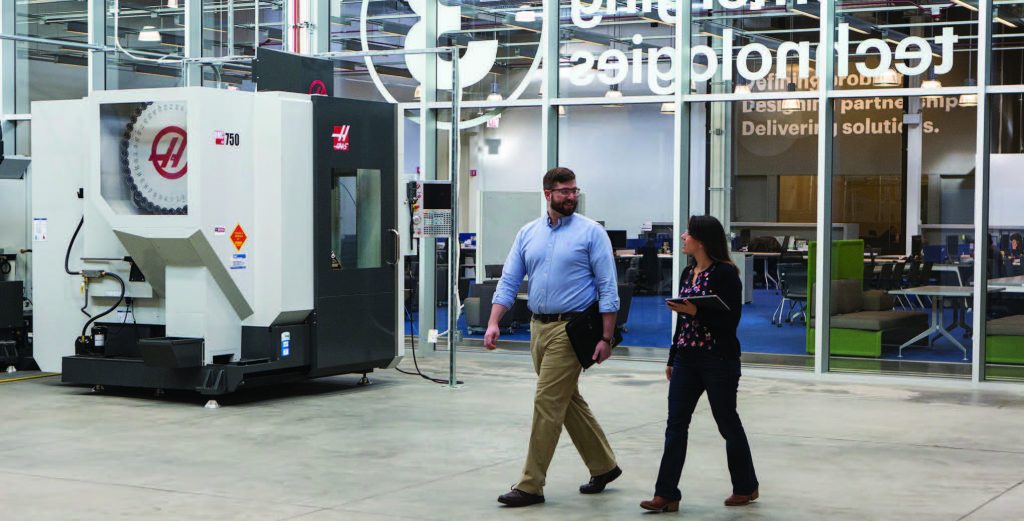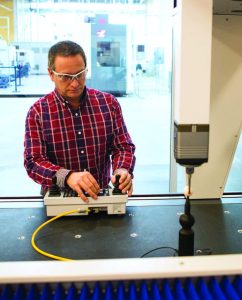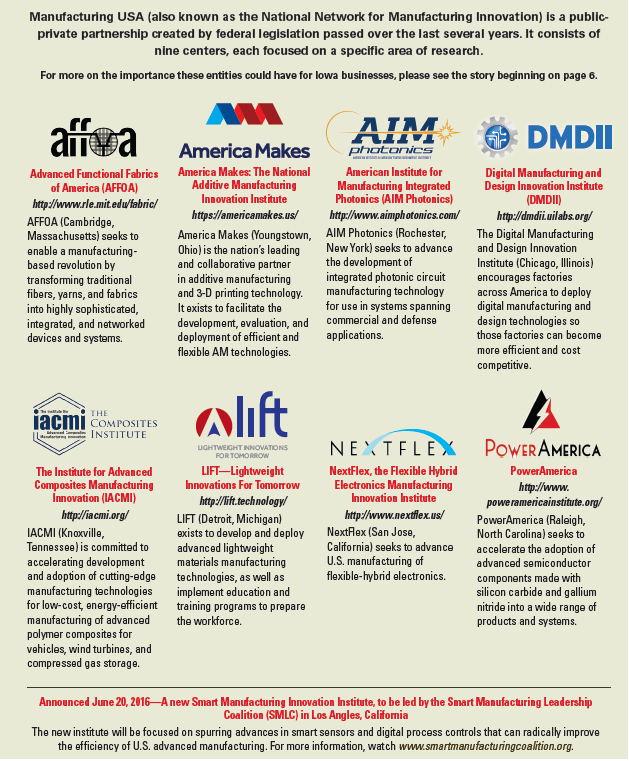
By Mike O’Donnell
At this very moment, the future of American manufacturing is being written at nine specially linked institutes fueled by $2.1 billion from the U.S. government, research universities, and hundreds of American companies.
It’s known as the National Network of Manufacturing Innovation (NNMI) – or, following a rebranding campaign launched in mid-September, as “Manufacturing USA.” If you aren’t familiar with it, you should begin educating yourself as soon as possible. Because your ability to compete could change dramatically, depending on the work taking place there and how quickly you’re willing and/or able to embrace it.
Manufacturing USA is a network of public-private partnerships designed to combine resources and expertise so that technology moves rapidly from research to real solutions. This is happening mostly through “project calls,” where member-driven groups identify key needs in a given technology area and decide which projects to fund. The goal is simple: do something real, and do it fast.
All nine institutes (six more are planned by next year) are designed to let everybody get involved—from the biggest corporations to the smallest companies. You can become a member of some institutes for as little as $500/year, giving you access to technology roadmaps, input into long-term direction of technologies, and in some cases, the ability to be involved in pilot projects.
As of this writing, 14 Iowa manufacturers have joined at least one institute. The smallest Iowa-based member has just a handful of employees; the largest has thousands.
CIRAS has a simple request: look at Manufacturing USA, decide what part of it is most relevant to your business, and engage right now.
Why this matters
Change is coming, and Iowans need to embrace it if they don’t want to be left behind.
Perhaps the most important part of Manufacturing USA for Iowa companies is the Digital Manufacturing and Design Innovation Institute (DMDII) in Chicago. It also is the most difficult to explain. While other institutes focus on particular technology areas, such as composites or flexible hybrid electronics, the DMDII focuses on a cross-cutting suite of technologies that enable the “digital thread.” There are three “thrust areas” in the DMDII: Advanced Analysis, Intelligent Machines, and Advanced Manufacturing Enterprise.

The main theme connecting it all is a desire to make information flow more easily inside and between industrial businesses—much as Facebook, Amazon, and Uber have helped consumers discover new ways to find and share what they want.
In the DMDII’s case, more than 260 partners have come together—including companies such as GE, Microsoft, and Siemens, as well as leading universities, government agencies, start-ups, and nonprofit and community groups. Their joint goal is to rapidly move these connecting technologies from research to industry. Early results indicate that the pace of change is about to accelerate.
For companies, however, change will not come as easily as deciding to shop at Amazon instead of driving to a store. Would-be digital manufacturers will have to master the basics before they leap into “Industry 4.0.” Want to optimize your supply chain? You’ll need a real-time accurate ERP system. Want to apply intelligent machining tools to optimize design? Your entire business (and your suppliers) better have 3D CAD models that reflect what is being built today.
Of course, there will be interim steps along the way during which companies with “digital maturity” will be able to see real value from technologies as they absorb them. For example, CIRAS’ research shows that 3D CAD and Advanced Engineering Tools maturity correlates with reduced worries about labor costs, and our experience shows that manufacturers receive ROI when implementing most other digital tools. The DMDII is developing an assessment to help manufacturers understand how ready they are and what comes next.
If you need another reason to embrace digitally integrated manufacturing, consider this: your customers will soon require it. Iowa’s manufacturing landscape is dominated by key suppliers in machinery, transportation, and aerospace. Given the potential benefits, those industries are at the front of the digital manufacturing push, and getting results requires a supply chain able to play at the same digital level as the OEMs. At this point, it’s not clear what anything will look like. But it is likely that the digital maturity assessment from the DMDII will be a key factor in what those OEMs expect.
The shift to digital manufacturing also will create many localized opportunities. Digital tools will allow your company to better link design, manufacturing, and supply chain operations, potentially creating significant new efficiencies. Companies on the front of this wave stand to gain significant market share.
Those who aren’t may get left behind.
Iowa is well positioned to be a leader in adopting digital manufacturing and capitalizing on this opportunity. CIRAS’ 2015–2016 manufacturing needs assessment shows that 3D CAD and Advanced Engineering Tools are among the most-implemented initiatives in the state. Iowa has the capacity to handle these tools. Our survey, however, shows that only 27 percent of companies have fully implemented them across the organization. Room exists for growth. Any needed help, in terms of digital manufacturing expertise, is already here—as evidenced by the fact that Iowa State University was the lead organization on three of the seven winning teams nationally in the most recent round of projects funded by the DMDII.
Today, CIRAS is issuing a challenge: Let’s make Iowa the most digitally capable state in the country. Let’s create opportunities for companies, improve the quality of life through higher paying jobs, and start to define the future of manufacturing for ourselves. Please call us if you’d like to help chart the path.
For more information, contact Mike O’Donnell at modonnll@iastate.edu or 515-294-1588.
A version of this article was published in the Fall 2016 edition of CIRAS News. To read more of that edition or others, please explore elsewhere on our website.
